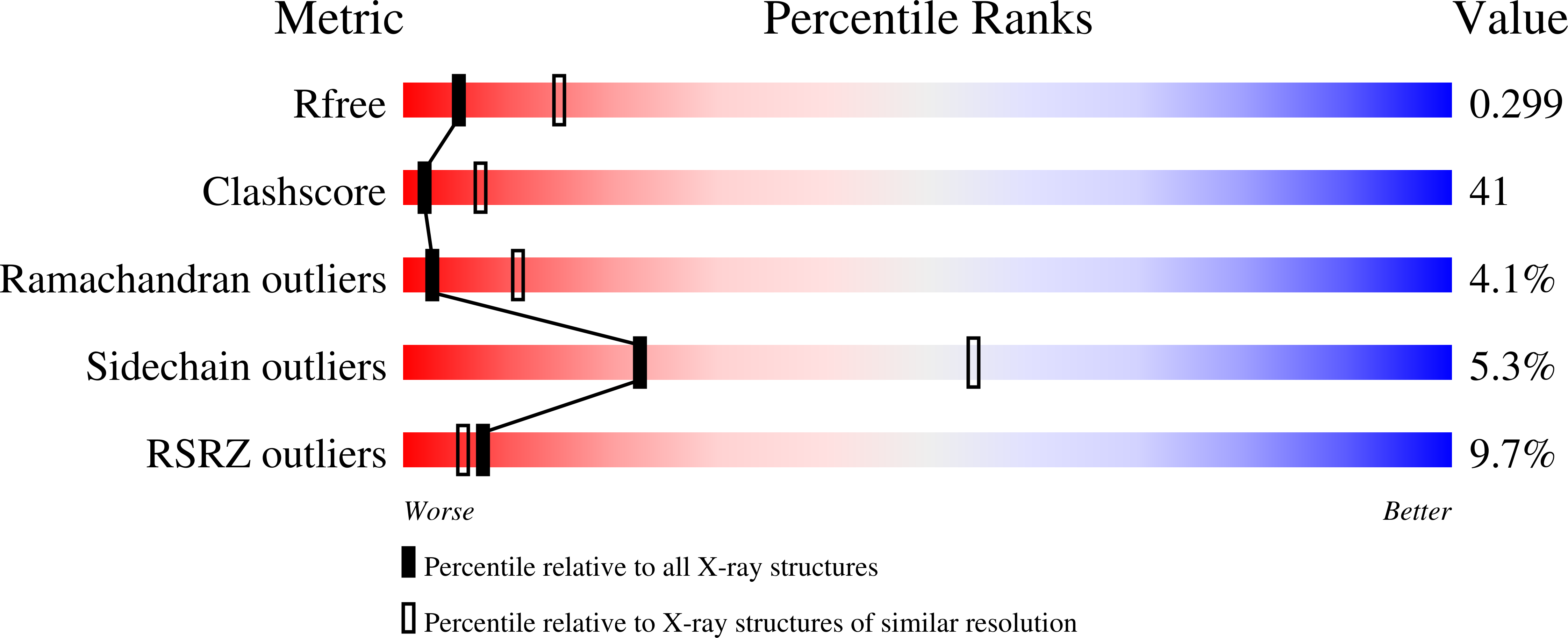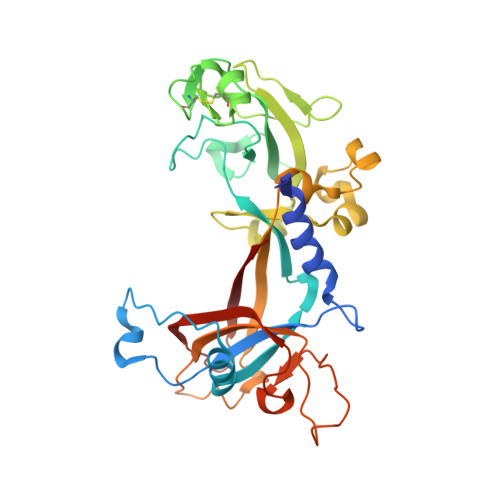Structure and location of gene product 8 in the bacteriophage T4 baseplate
Leiman, P.G., SHNEIDER, M.M., KOSTYUCHENKO, V.A., CHIPMAN, P.R., MESYANZHINOV, V.V., ROSSMANN, M.G.(2003) J Mol Biol 328: 821-833
- PubMed: 12729757
- DOI: https://doi.org/10.1016/s0022-2836(03)00366-8
- Primary Citation of Related Structures:
1N7Z, 1N80, 1N8B - PubMed Abstract:
Many bacteriophages, such as T4, T7, RB49, and phi29, have complex, sometimes multilayered, tails that facilitate an almost 100% success rate for the viral particles to infect host cells. In bacteriophage T4, there is a baseplate, which is a multiprotein assembly, at the distal end of the contractile tail. The baseplate communicates to the tail that the phage fibers have attached to the host cell, thereby initiating the infection process. Gene product 8 (gp8), whose amino acid sequence consists of 334 residues, is one of at least 16 different structural proteins that constitute the T4 baseplate and is the sixth baseplate protein whose structure has been determined. A 2.0A resolution X-ray structure of gp8 shows that the two-domain protein forms a dimer, in which each monomer consists of a three-layered beta-sandwich with two loops, each containing an alpha-helix at the opposite sides of the sandwich. The crystals of gp8 were produced in the presence of concentrated chloride and bromide ions, resulting in at least 11 halide-binding sites per monomer. Five halide sites, situated at the N termini of alpha-helices, have a protein environment observed in other halide-containing protein crystal structures. The computer programs EMfit and SITUS were used to determine the positions of six gp8 dimers within the 12A resolution cryo-electron microscopy image reconstruction of the baseplate-tail tube complex. The gp8 dimers were found to be located in the upper part of the baseplate outer rim. About 20% of the gp8 surface is involved in contacts with other baseplate proteins, presumed to be gp6, gp7, and gp10. With the structure determination of gp8, a total of 53% of the volume of the baseplate has now been interpreted in terms of its atomic structure.
Organizational Affiliation:
Department of Biological Sciences, Purdue University, Lilly Hall of Life Sciences, West Lafayette, IN 47907-2054, USA.















